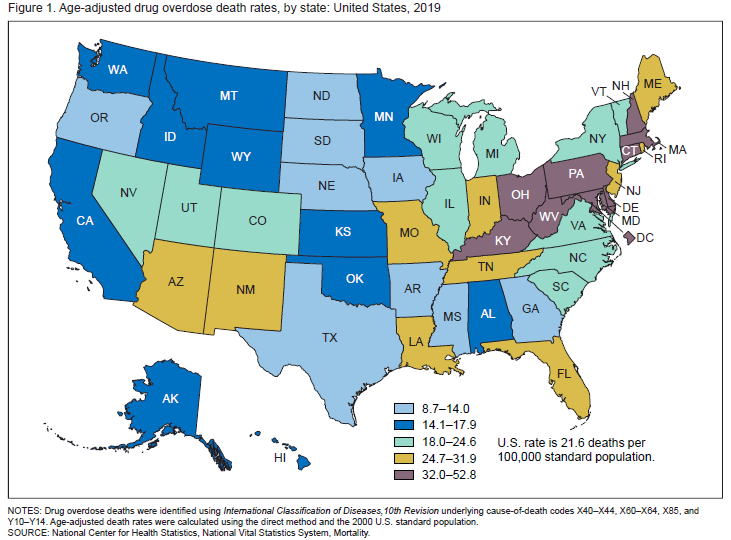Drug Poisoning Mortality, by State and by Race and Ethnicity: United States, 2019
Posted on by
NCHS released a Health E-Stat that provides information on drug overdose mortality by state (and the District of Columbia) and by race and ethnicity, and adds to findings from a recently published Data Brief on drug overdose death rates.
Findings:
- The age-adjusted rate for drug overdose deaths in the United States for 2019 was 21.6 per 100,000 standard population.
- The five states with the highest rates were West Virginia (52.8), Delaware (48.0), District of Columbia (43.2), Ohio (38.3), and Maryland (38.2).
- The five states with the lowest rates were Nebraska (8.7), South Dakota (10.5), Texas (10.8),
North Dakota (11.4), and Iowa (11.5). - The age-adjusted drug overdose death rate for the non-Hispanic white population in 2019 (26.2
per 100,000 standard population) was 21.3% higher than the national rate. - The rate for the non-Hispanic black population (24.8) was 14.8% higher than the national rate.
- The rate for the non-Hispanic American Indian or Alaska Native population (30.5) was 41.2% higher than
the national rate. - The rate for the non-Hispanic Asian population (3.3) was 84.7% lower than the national rate.
- The rate for the non-Hispanic Native Hawaiian or Other Pacific Islander population (9.5) was 56.0% lower than the national rate. The rate for the Hispanic population (12.7) was 41.2% lower than the national rate.
Posted on by
Page last reviewed: March 25, 2021
Page last updated: March 25, 2021
Content source:
CDC, National Center for Health Statistics

